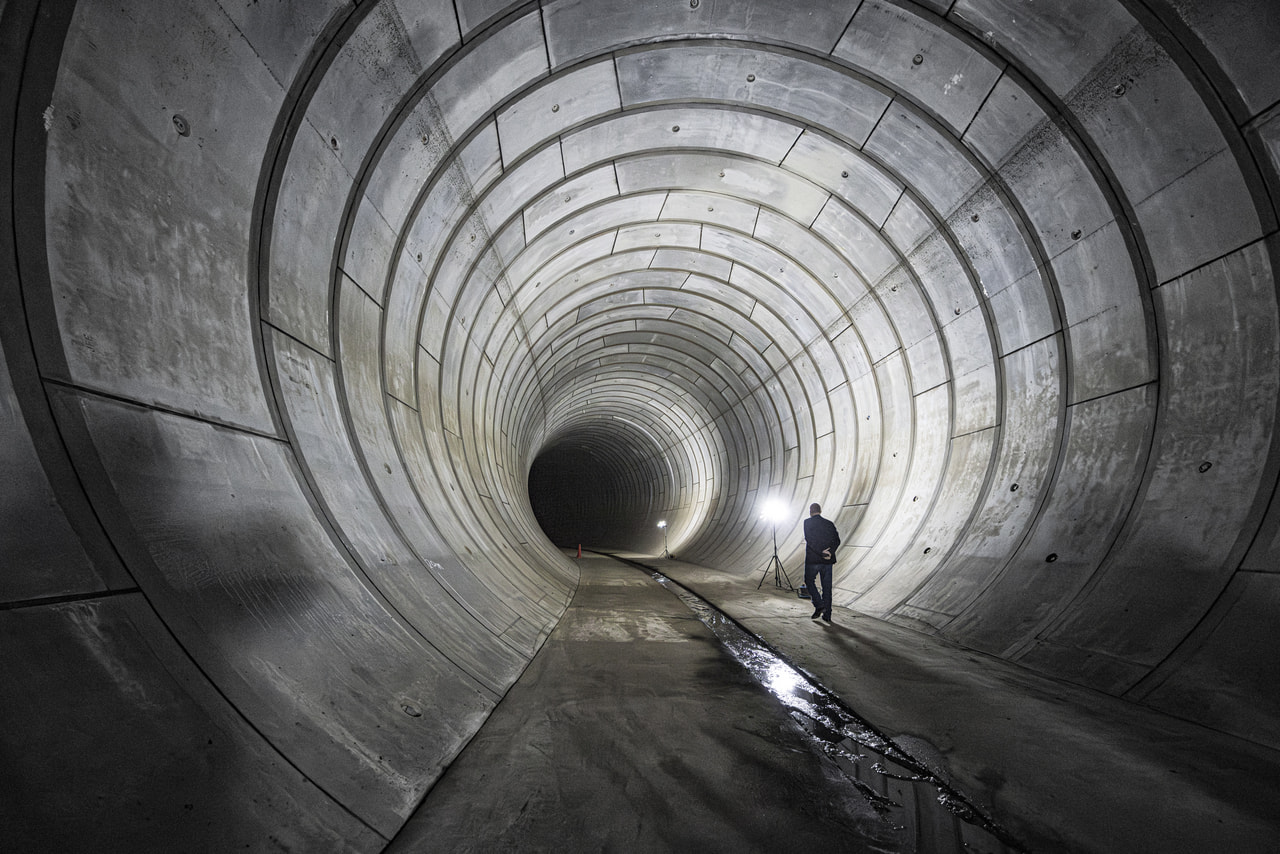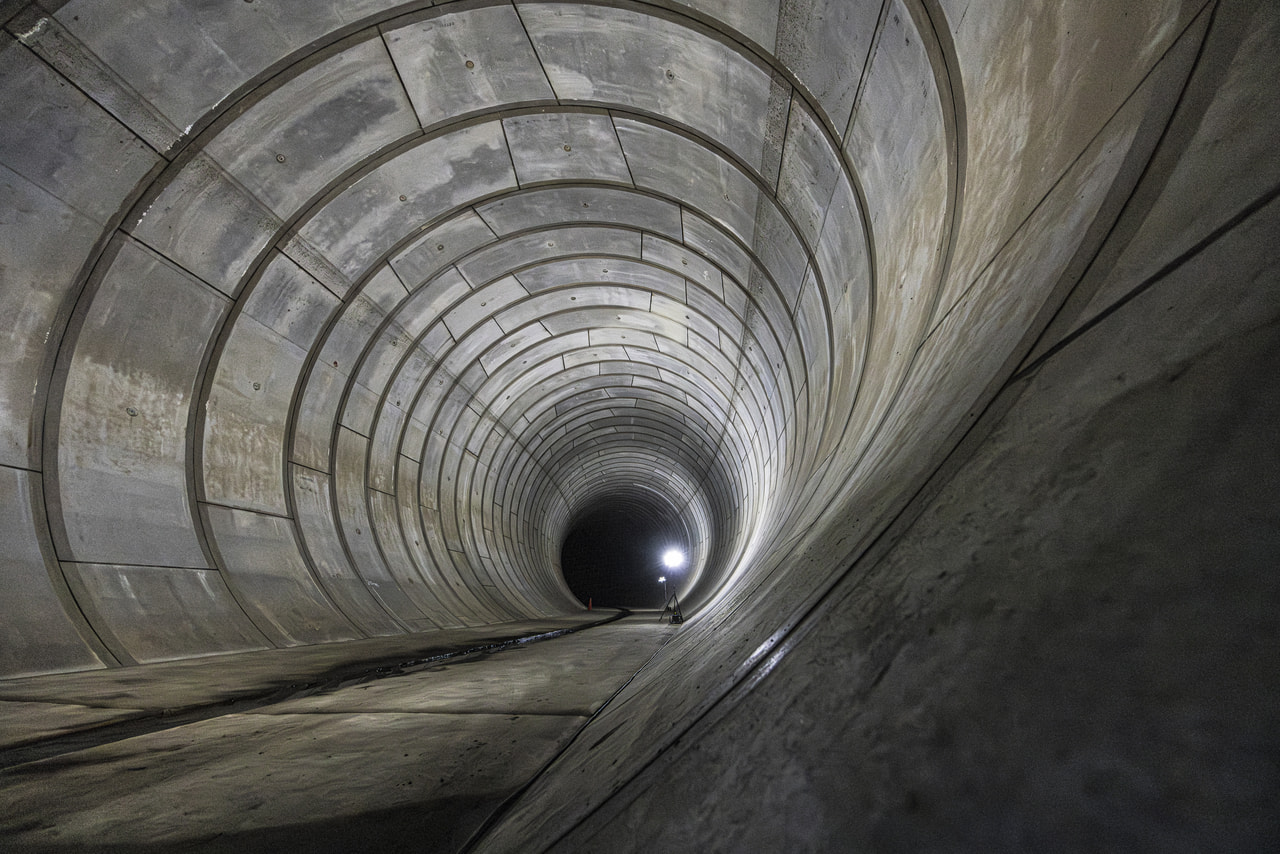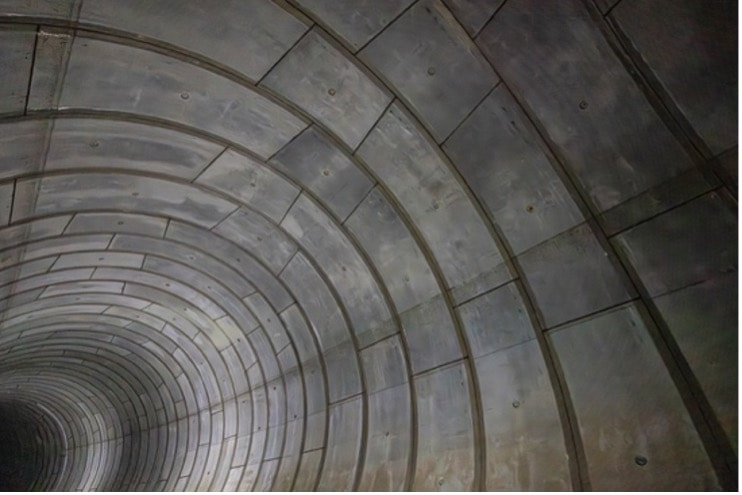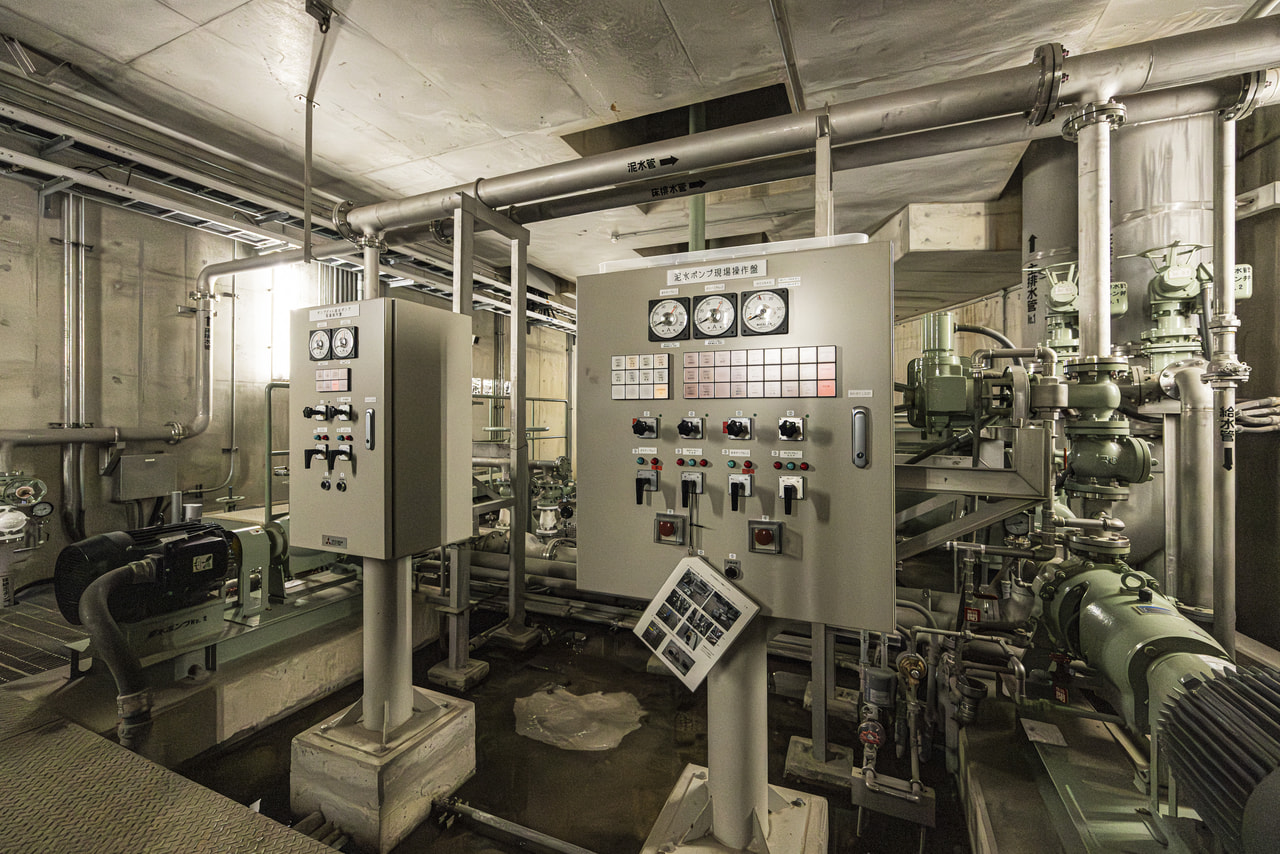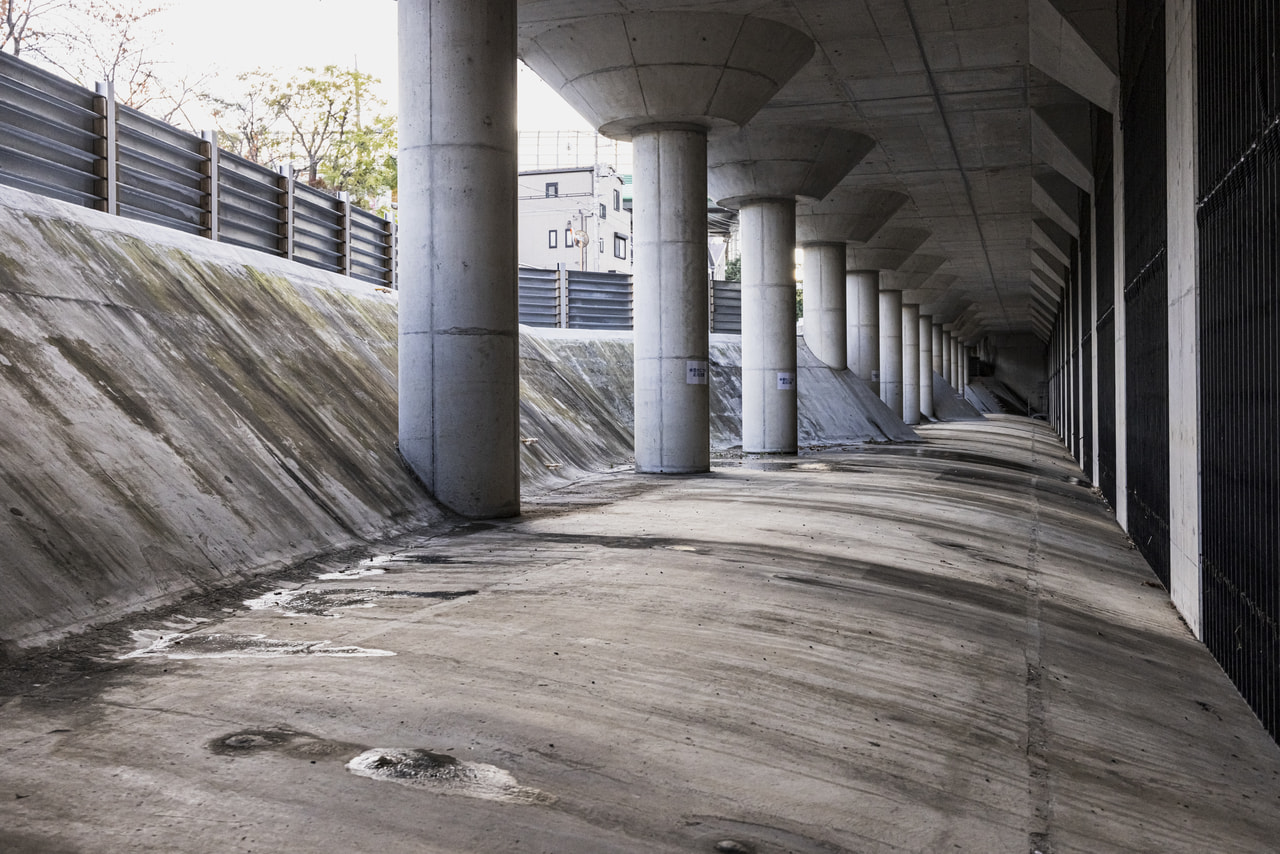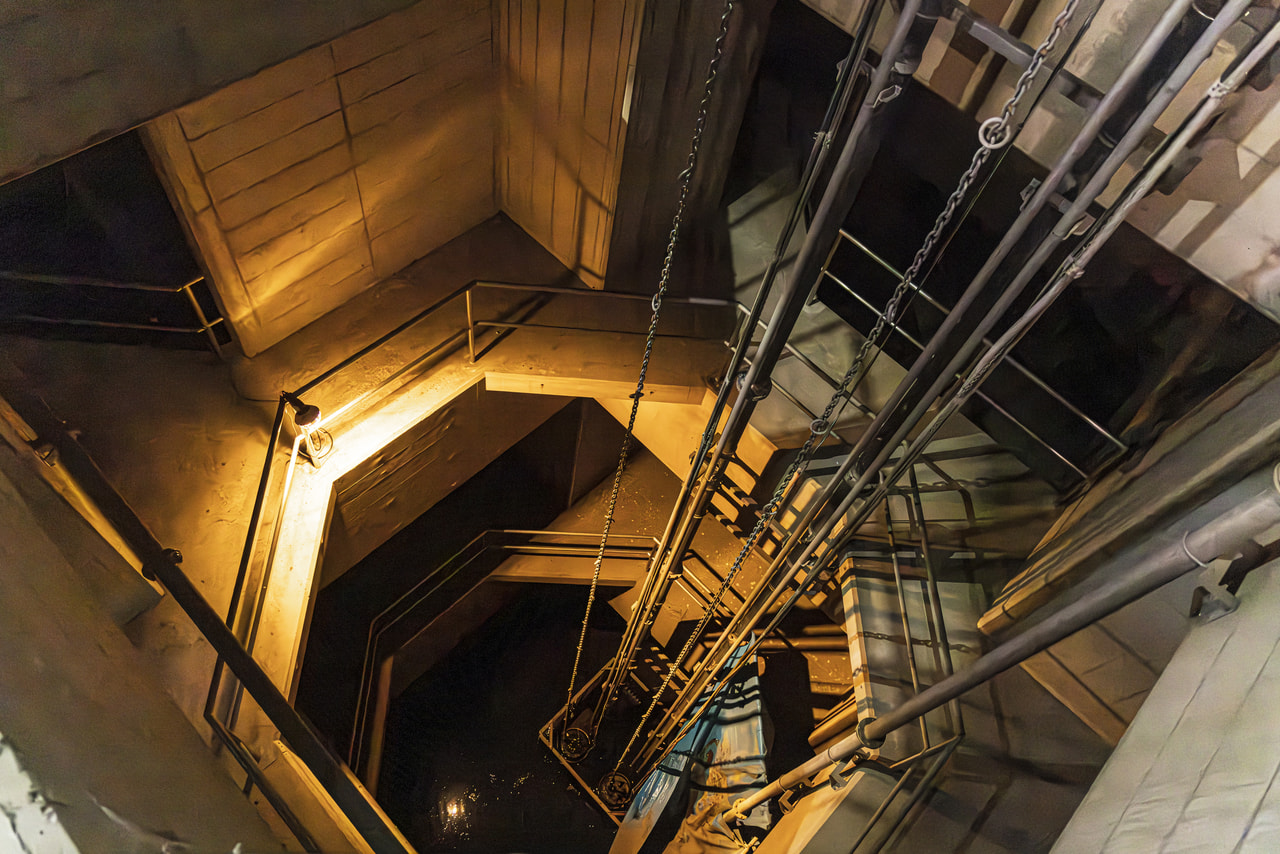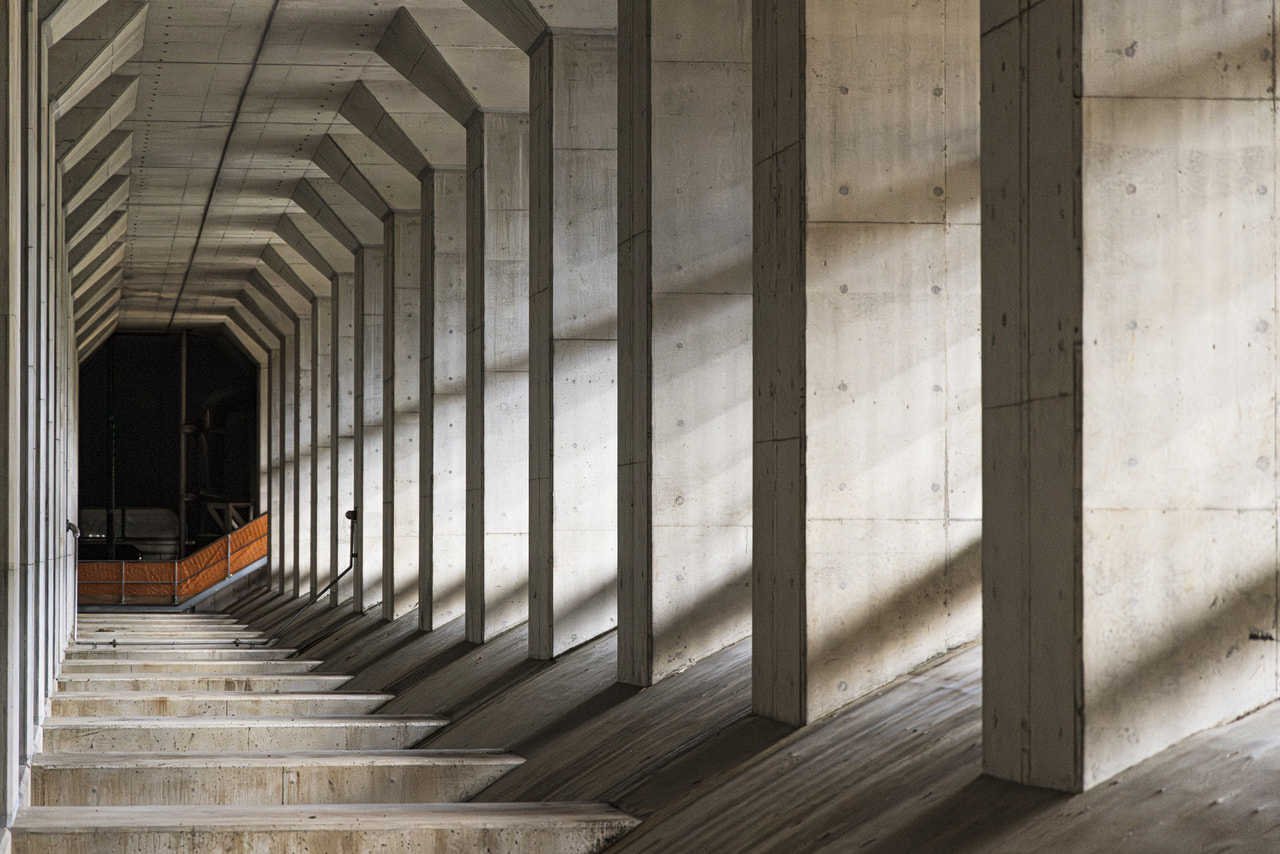
March 31, 2025
Tokyo Flood Control Measures: The 13 km Underground Tunnel Protecting the City from Urban Flooding
Tokyo Metropolitan Government (TMG) is focusing on measures to combat urban flooding, including the construction of facilities like the Kanda River/Ring Road No.7 Underground Wide Area Regulating Reservoir to prevent river overflows. The reservoir will connect five major rivers, stretch 13.1 km, and hold 1.43 million ㎥ of water. Plans to discharge water into Tokyo Bay are also under consideration.
Flood Control Measures in Tokyo
Since 2000, the frequency of torrential rainfall and flooding has increased significantly around the world and is becoming more common in major urban areas, such as the floods in Malaysia in 2023 and the heavy rains in Europe in 2024.
In Japan, the frequency of heavy rainfall has been increasing, with the annual average number of incidents involving precipitation exceeding 100 mm per hour nearly doubling when comparing the periods of 1976–1985 and 2013–2022. Tokyo began prioritizing urban flood control measures in response to the severe damage caused by localized torrential rainfall in 1999.
History of Flooding in Tokyo
Like many major cities worldwide, Tokyo is a city of rivers. Over 100 flow through the metropolis, 92 of which are Class A rivers—that is, of significant economic and national importance. Throughout its history, Tokyo has experienced major flooding events that have had a detrimental impact on the city’s economy and on the lives of its residents.
In 1958, Typhoon No. 22 (Typhoon Ida) hit Tokyo and dropped nearly 76 mm of rain per hour, causing extensive flooding and the most severe damage in the city since World War II. Between September 4–5, 2005, rainfall exceeding 100 mm per hour was recorded overnight, accumulating to a level of 263 mm and causing serious flood damage to 5,827 homes.
In 2019, Typhoon No. 19 (Typhoon Hagibis) dropped record rainfall on Tokyo, causing seven rivers directly managed by TMG to overflow and the riverbanks of four to collapse. Approximately 1,300 homes were inundated, causing major disruptions to the lives of many residents.
The frequency and severity of such events highlights the crucial need for Tokyo to develop a variety of countermeasures against the threat of urban flooding.
Importance of Urban Flood Mitigation and Current Methods
TMG’s flood-mitigation measures generally fall into two categories: the improvement of river channels; and the development of watersheds, such as the construction of reservoirs and bypass channels. Each has merits but also presents certain challenges.
River channels can be improved by widening, fortifying with revetments, or excavating and deepening. These measures lower the risk of riverbank collapse and increase capacity, reducing the risk of overflow into surrounding areas. Challenges include acquiring the required land within urban areas and renovating or relocating bridges and other vital river structures, while construction concerns such as securing transportation routes and sites for yard use and limiting disruptions to residents’ lives and work also require attention.
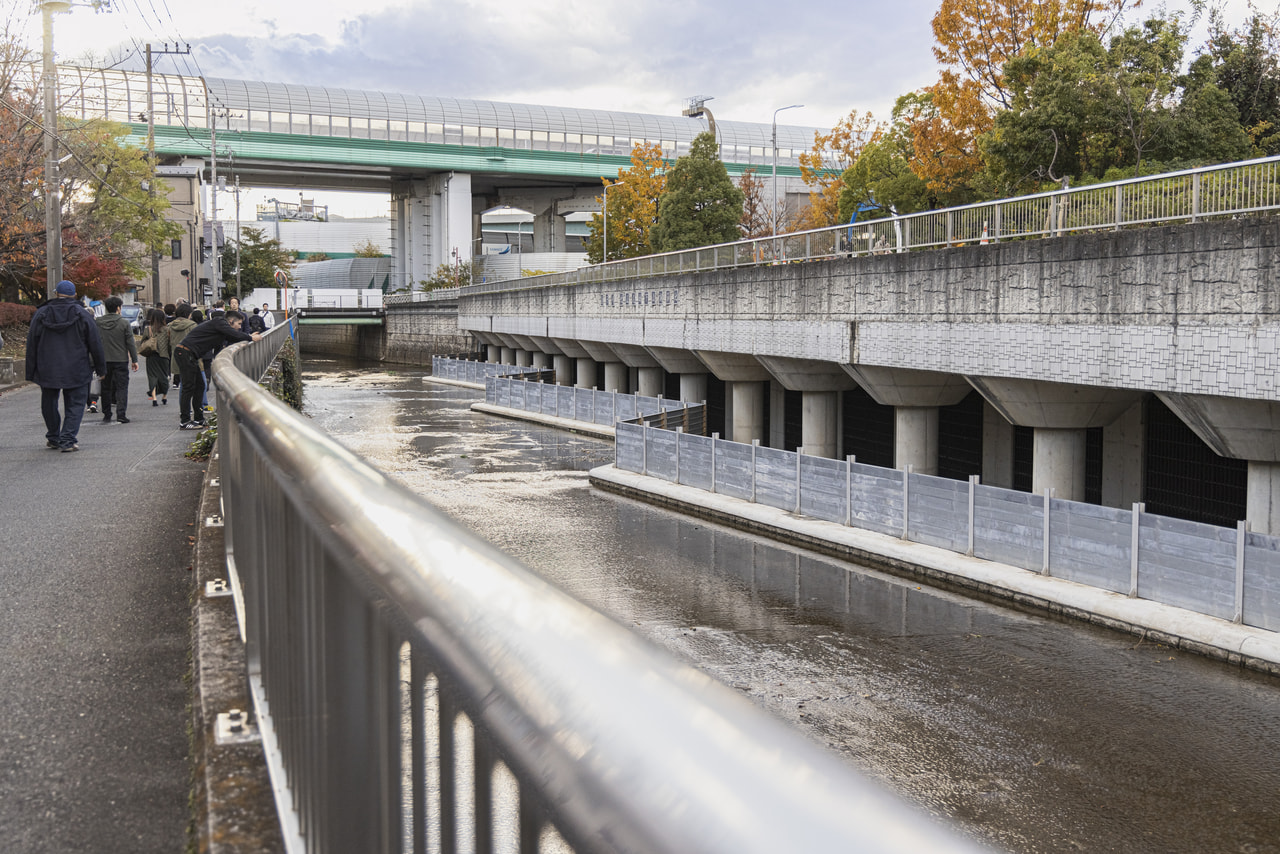
The Shirako River. Beyond the fence on the right is the Bikuni Bridge Downstream Regulating Reservoir.
One step the city is taking to deal with these challenges is to use public spaces, such as the land beneath public roads and parks, for the construction of regulating reservoirs.
There are three types of regulating reservoirs commonly used for flood mitigation within Tokyo: in-ground, underground (box), and underground discharge tunnels. Each helps to prevent river overflow by collecting and storing water during periods of heavy rain, before discharging it once water levels have dropped.
River channels have been improved to accommodate rainfall volumes of up to 50 mm per hour, whereas watershed measures, such as the construction of regulating reservoirs, are used to deal with rainfall exceeding 50 mm per hour.
The Shirako River Project
The Shirako River’s watershed currently comprises three main regulating reservoirs: the Bikuni Bridge Upstream Regulating Reservoir (completed in 1985), the Bikuni Bridge Downstream Regulating Reservoir (completed in 2002), and the Shirako River Underground Regulating Reservoir (completed in 2017). The Shirako River Underground Regulating Reservoir and Bikuni Bridge Downstream Regulating Reservoir each have a storage capacity of 212,000 ㎥, while the Bikuni Bridge Upstream Regulating Reservoir has a capacity of 34,400 ㎥.
Recorded data demonstrate the effectiveness of these countermeasures in reducing flood damage. For example, records for Typhoon No. 18 (Typhoon Judy) in 1982—prior to the implementation of these countermeasures—show a maximum hourly rainfall of 65 mm, with 55.2 hectares inundated and 621 buildings sustaining significant flood damage. By contrast, a torrential rain event in 2005 with a recorded maximum hourly rainfall of 80 mm resulted in only 0.7 hectares inundated and 77 buildings damaged.
Tokyo’s 13 km Tunnel Reservoir Project: A Key to Future Flood Prevention
In the face of climate change and increasing rainfall events exceeding 50 mm per hour, countermeasures continue to be developed. In a current key project, the Shirako River Underground Regulating Reservoir is being connected with the Kanda River and Underground Ring Road No.7 Regulating Reservoir (Shakujii River section) via a 13 km tunnel-type reservoir. When completed, the combined reservoir will hold 1,430,000 ㎥ of water and will serve three of Tokyo’s major waterways: the Shirako River, Shakujii River, and Kanda River. The project aims to significantly reduce flood risk by finding effective ways to cope with rainfall events exceeding 75 mm per hour across Tokyo and localized rainfall of 100 mm per hour.
Key Findings and Conclusions
As a major urban center with an extremely dense population, Tokyo faces numerous challenges in implementing flood-control measures. One such challenge is the limited availability of public land that can be used for flood control. To address this problem, TMG intends to use underground reservoirs, with a key project being the connection of the Shirako River Underground Regulating Reservoir with the Kanda River/Underground Ring Road No.7 Regulating Reservoir.
Other major cities across the world face similar yet unique challenges in dealing with urban flooding and are developing their own innovative solutions.
Kuala Lumpur, for example, is experiencing increased incidents of flooding in its commercial center. In response, it has implemented the SMART (Stormwater Management and Road Tunnel) system, which diverts water from a flood-prone area of the city using a holding pond, bypass tunnel, and storage reservoir. The system also takes advantage of a dual-use tunnel that functions as a motorway outside of periods of heavy rain.
With the rise in torrential rainfall events and increased risk of urban flooding worldwide, cities across the globe need to collaborate by sharing specific technologies, valuable data, and information on mitigation methods in order to devise and implement the best possible flood-prevention measures and ensure the safety of citizens.
